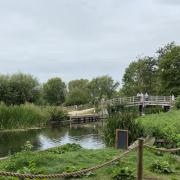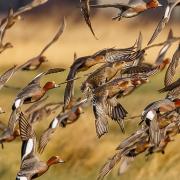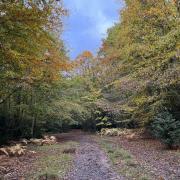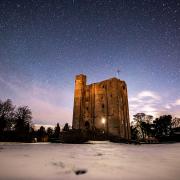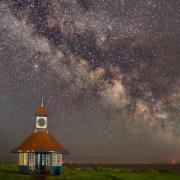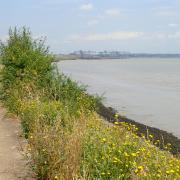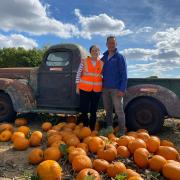On the urban fringe of Basildon is an expansive area of nationally important wildlife habitat, known as Langdon. It is a true landscape-scale mosaic of diverse habitats, including flower-rich meadows, rough grassland, extensive areas of scrub, semi-natural and ancient woodland and a scattering of ponds. The reserve offers some of the highest viewpoints in the county, with commanding views and miles of excellent walks through the different areas and habitats.
Essex Wildlife Trust manages over 200 hectares of this wildlife-rich area, forming the largest inland nature reserve. It is so large that it is really six reserves rolled into one, each encompassing their own character and priorities for wildlife. The six different areas include Dunton Plotlands, Langdon Lake and Meadows, Lincewood, Willow Park, Marks Hill and Hoppits Shaw.

This expansive site is spectacular for both flora and fauna. It is rich with foraging mammals, nesting birds, 30 different species of butterfly have been recorded here and over 350 flowering plant types. During spring and early summer, the species-rich meadows and grassy clearings will be awash with colour, as the common spotted and green-winged orchids, yellow rattle, common knapweed, agrimony, ox-eye daisy, bird’s-foot trefoil and meadow vetchling will all be in full bloom.
Interestingly, at the time of the development of Basildon New Town (during the 1950s-70s), several of the meadows were stripped of their top-soil in preparation for building. Thankfully these plans were later abandoned, but this stripping of the top layer of nutrient rich soil has almost certainly benefitted the botanical richness of the meadows today.

The landscape is of particular importance for insects, owing to its network of interconnected flower-rich meadows, interspersed with rougher grassland, scrub and woodlands. This diverse mosaic of habitats is also important for bats, reptiles, amphibians, glow-worms and the elusive lesser spotted woodpecker.
For those that love history, Langdon is home to a unique dwelling. From 1924, plots of rural land were sold to Londoners and locals to build holiday bungalows and small holdings. During the 1940s, however, Dunton became a wartime refuge for families fleeing London. Many people chose to live in their plots permanently and evidence of this time is still seen today. The last remaining bungalow still remains as a Plotland museum, The Haven, open since 1984.

Essex Wildlife Trust offers free access to its nature reserves so that everyone can spend time in nature. This is a great site for walkers, wildlife lovers and families. Lovers of the Beatrix Potter books can explore the Peter Rabbit trail, where Jemima Puddle-Duck, Mrs Tiggy-Winkle and other familiar friends are waiting to be found.
For a full list of Essex Wildlife Trust nature reserves to explore, visit essexwt.org.uk/nature-reserves
Langdon Nature Discovery Park, Lower Dunton Road, Basildon SS16 6EJ

Did you know?
Langdon is one of the Trust’s best sites to view native orchids in the spring and summer. This year, Essex Wildlife Trust’s orchids were even on display at the RHS Chelsea Flower Show!




